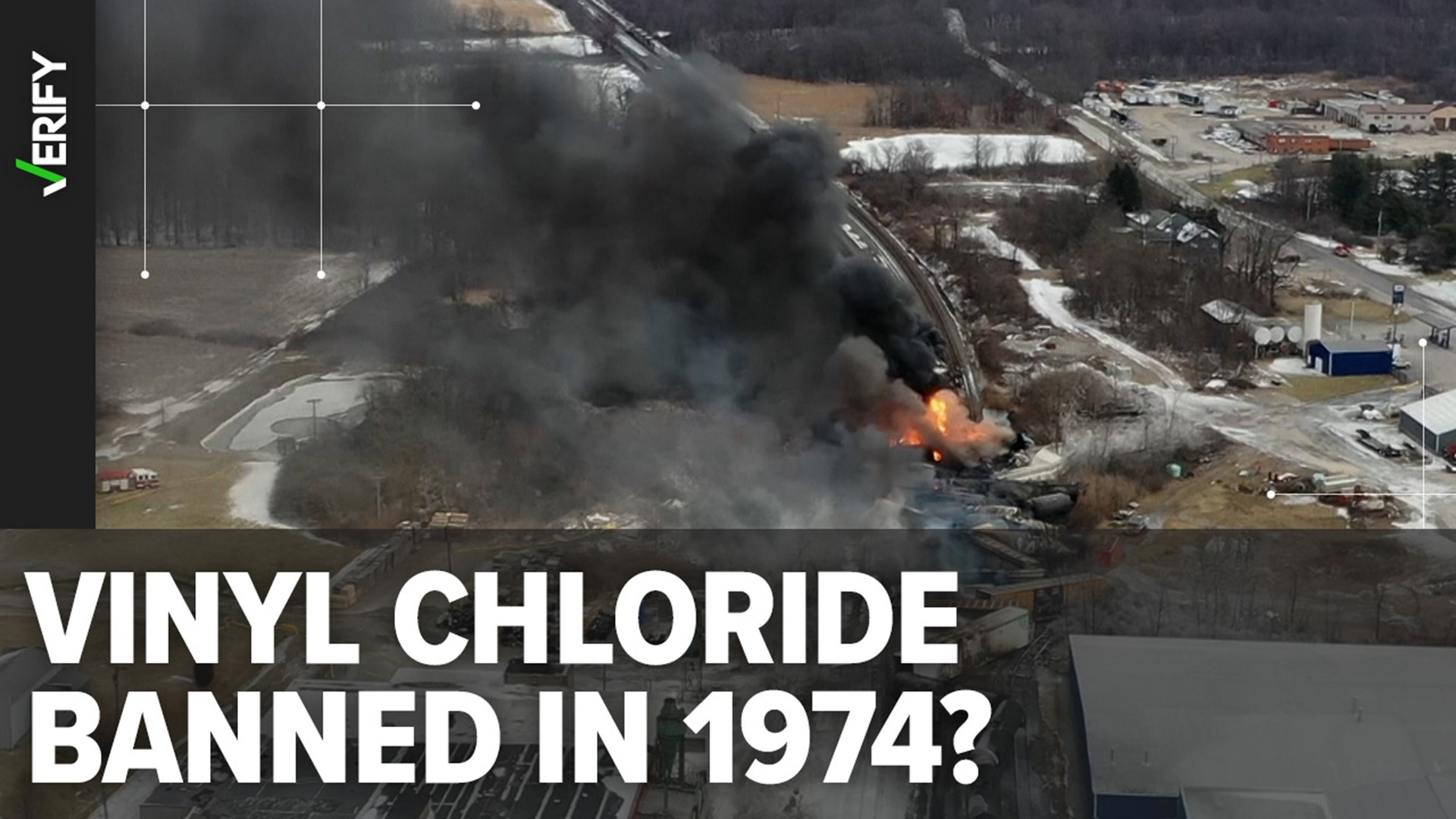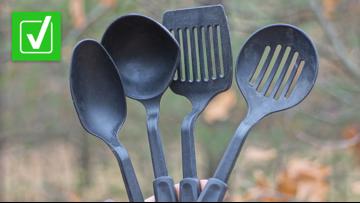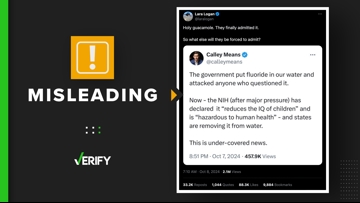Nearly one dozen of the 38 train cars that derailed in East Palestine, Ohio, in early February 2023 were carrying hazardous materials, including a toxic chemical called vinyl chloride.
The vinyl chloride content in five of the rail cars was released and burned due to the risk of explosion, which could have sent deadly shrapnel up to one mile away from the derailment site, Ohio Gov. Mike DeWine’s office said. Burning the chemical sent a massive plume of smoke into the air and forced East Palestine residents to evacuate due to health concerns.
In the weeks following the derailment, some people online have claimed that vinyl chloride has been banned since 1974.
“Trying to understand why a train was carrying over 300,000 gallons of a chemical that was banned in 1974,” one viral meme shared on Twitter reads.
THE QUESTION
Was vinyl chloride banned in 1974?
THE SOURCES
- The Consumer Product Safety Commission (CPSC)
- Wisconsin Department of Health Services
- Ohio Department of Health
- U.S. Food and Drug Administration (FDA)
- U.S. Environmental Protection Agency (EPA)
- U.S. Occupational Safety and Health Administration (OSHA)
- National Capital Poison Center
- National Cancer Institute
- National Transportation Safety Board (NTSB)
THE ANSWER
In 1974, the Consumer Product Safety Commission banned vinyl chloride in aerosols, but not other products. There are additional federal regulations in place today to limit people’s exposure to vinyl chloride.
WHAT WE FOUND
Vinyl chloride is a colorless and flammable gas that evaporates quickly. It is primarily used to make a type of plastic called polyvinyl chloride (PVC).
PVC is used in pipes, wire and cable coatings, car parts and upholstery, kitchenware, and packaging materials, state health departments in Wisconsin and Ohio say.
While vinyl chloride is allowed in some products, including PVC, the federal government’s Consumer Product Safety Commission (CPSC) issued a ban on the chemical in aerosols in 1974.
The commission noted at the time that vinyl chloride had been “linked by scientific studies and clinical reports to a rare form of liver cancer.”
“Although there is no evidence directly linking cancer to the use of aerosols containing vinyl chloride, consumers are always subject to inhalation of the substance whenever they use aerosols that contain it. And there is no known safe exposure level,” the CPSC said in 1974.
According to the federal government’s National Cancer Institute, vinyl chloride exposure has been associated with an increased risk of liver, brain and lung cancers, along with lymphoma and leukemia.
Other federal agencies don’t ban vinyl chloride altogether, but they have developed regulations and recommendations to protect people from potentially harmful effects of the chemical.
For example, the U.S. Food and Drug Administration limits the amount of polyvinyl chloride that can be used in food packaging. As a result of this federal regulation, “food does not contain a significant amount of vinyl chloride,” the National Capital Poison Center says on its website.
The Environmental Protection Agency (EPA) and the Occupational Safety and Health Administration (OSHA) also regulate vinyl chloride in the U.S.
Did the train cars contain 300,000 gallons of vinyl chloride, as posts claim?
Some of the social media posts claim that the Norfolk Southern train that derailed in Ohio was carrying 300,000 gallons of vinyl chloride.
But federal government data doesn't back up these claims.
The National Transportation Safety Board (NTSB) said in a preliminary report issued on Feb. 23 that five of the derailed train cars were carrying a total of 115,580 gallons of vinyl chloride – not 300,000 gallons, as people on social media claim.
According to the EPA, 247,000 gallons of liquid waste had been transported away from the derailment site for disposal as of Feb. 17. But the agency didn’t specify whether this was only vinyl chloride or included other chemicals.












